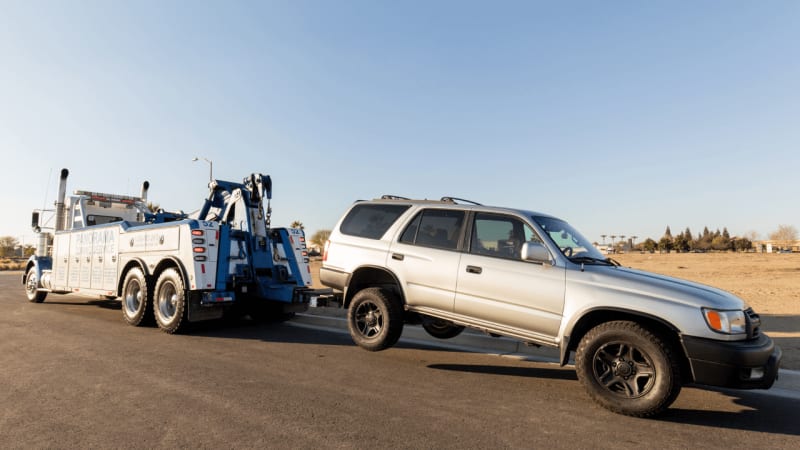Roadside responder deaths are vastly underreported, AAA study says

Of late, studies and data on U.S. traffic keep returning suboptimal findings. Risky behaviors are up, distraction is up, fatalities are up. The AAA Foundation for Traffic Safety has more fuel for that fire, its latest study finding that roadside responders are being “struck and killed nearly four times more than reported.”
By roadside responders, AAA means the people arriving to help drivers through roadside emergencies — folks like the tow truck drivers and roadside technicians who work for AAA, giving the AAA a keen interest in improving the issue, as well as others like mobile mechanics and safety service patrols.
We think there are two parts to this, the first being a look at the raw numbers: The foundation says it looked through “diverse information sources” to find that 123 roadside responders were killed in the seven-year span from 2015 through 2021, a little more than 17 people per year. This compares to what AAA says is reflected in national crash statistics, where only 34 roadside responder fatalities were recorded in the same period.
The data showed almost 90% of crashes happen on roads with speed limits 55 mph or higher; 84% of incidents did not involve rain or slippery conditions; and 63% occurred at night. These point to “speed, impairment, and distraction as likely factors.”
We’re not sure what the Foundation for Traffic Safety used for source information or the data claiming 34 deaths in seven years, but the National Highway Traffic Safety Administration says, “Every year about 23 roadside workers and first responders are involved in a fatal crash along a road, and hundreds more suffer injuries while tending to traffic incidents.” That works out to even larger numbers than the foundation arrived at.
Deaths among highway construction and work crews and police forces weren’t included in the findings. Signs instructing drivers to watch out for road crews and outlining harsh penalties for doing so have become common, and regular tales of injuries and deaths among police on road shoulders should indicate what’s also happening to civilians. This week, a Michigan State Police trooper was killed on I-75 while standing outside his vehicle, and an Oklahoma Highway Patrolman was thrown into a field when an SUV traveling on I-40 plowed into the car the officer was standing next to.
These deaths happen despite “Move Over” laws in all 50 states that mandate drivers move out of the lane nearest the shoulder when they see flashing lights. The NHTSA claims that “one-third of Americans are not aware of these laws,” and, “Traffic-related incidents continue to be the leading cause of death among on-duty law enforcement officers. Over the last five years, about 100 crashes involved a driver hitting and killing a law enforcement officer.”
The second aspect of the AAA study is a call to action, the foundation seeking a way for state police crash report forms to note that crash victims were roadside assistance providers instead of being labeled “pedestrians.” Of course, the foundation would like drivers to also pay more attention and give more space to anyone on the shoulder. We haven’t heard of a place where driving is getting better, safer, or more considerate. Click through to the study to get more details on the scope of the problem and some potential solutions.



